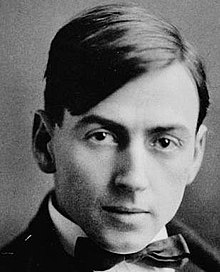Tom Thomson
| Tom Thomson | |
|---|---|
 |
|
| Born |
Thomas John Thomson August 5, 1877 Claremont, Ontario |
| Died | July 8, 1917 (aged 39) Canoe Lake, Algonquin Park, Ontario |
Thomas John "Tom" Thomson (August 5, 1877 – July 8, 1917) was an influential Canadian artist of the early 20th century. He directly influenced a group of Canadian painters that would come to be known as the Group of Seven, and though he died before they formally formed, he is sometimes incorrectly credited as being a member of the group itself. Thomson died under mysterious circumstances on Canoe Lake in Algonquin Park.
Thomas John "Tom" Thomson was born near Claremont, Ontario to John and Margaret Thomson and grew up in Leith, Ontario, near Owen Sound. In 1899, he entered a machine shop apprenticeship at an iron foundry owned by William Kennedy, a close friend of his father. He was fired from his apprenticeship by a foreman who complained of Thomson's habitual tardiness. Also in 1899, he volunteered to fight in the Second Boer War, but was turned down because of a medical condition. Thomson was reputed to have been refused entry into the Canadian Expeditionary Force for service in the First World War also. He served as a fire ranger in Algonquin Park during this time. In 1901, he enrolled in a business college in Chatham, Ontario, but dropped out eight months later to join his older brother, George Thomson, who was operating a business school in Seattle. There he met and had a brief summer romance with Alice Elinor Lambert. In 1904, he returned to Canada, and may have studied with William Cruikshank, 1905–1906. Settling in Toronto, Thomson joined Legg Brothers, a photo-engraving firm. In late 1908/early 1909, Thomson joined Grip Ltd., an artistic design firm in Toronto, where several of the future members of the Group of Seven also worked. In fall 1912, Thomson left Grip with several other designers to work at another Toronto firm, Rous & Mann.
Thomson first visited Algonquin Park in May 1912. There after he often traveled around Ontario with his colleagues, especially to the wilderness of Ontario, which was to be a major source of inspiration for him. In 1912 he began working, along with other artists who would go on to form the Group of Seven after his death, at Rous and Mann Press, but left the following year to work as a full-time artist. He first exhibited with the Ontario Society of Artists in 1913, and became a member the following year. He would continue to exhibit with the Ontario Society until his death. In 1914 the National Gallery of Canada began acquiring his paintings, which signaled a turning point in Thomson's career. For several years he shared a studio and living quarters with fellow artists. Beginning in 1914 he worked intermittently as a fire fighter, ranger, and guide in Algonquin Park, but found that such work did not allow enough time for painting. During the next three years, he produced many of his most famous works, including The Jack Pine, The West Wind and The Northern River.
...
Wikipedia
